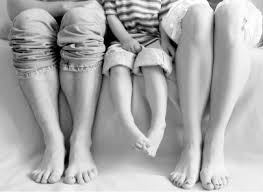
 Corns and calluses are common skin conditions of the feet that can be easily treated, but good foot care and properly fitted shoes can prevent them developing.
Corns and calluses are common skin conditions of the feet that can be easily treated, but good foot care and properly fitted shoes can prevent them developing.
How do corns and calluses develop?
Given your feet carry your body weight, footwear can make this more challenging if it creates extra friction on areas of your foot. When this happens, your body responds by thickening the surface layer of the skin. These hard patches of skin are called calluses, and if the pressure is concentrated in a small area, a hard corn may develop.
If not relieved, pressure may produce inflammation resulting in pain, swelling and redness. ‘Soft’ corns can also form between the toes, where skin is moist from sweat or inadequate drying. These appear white and rubbery and are also caused by excessive friction or pressure. Corns and calluses are most often found on the balls of the feet or the tops of the toes, as well as on the heels and along the sides of toenails.
Everyone can get them, especially the elderly, who lose fatty tissue and flexibility with age, and those who work in occupations that keep them on their feet.
What are the causes?
Calluses and corns can be signs of underlying problems and early warnings of more complex foot disorders. They can also indicate abnormalities or deformity in bone structure, and be caused by ill-fitting or inappropriate footwear. Overall, they are part of the body’s defence system to protect tissue.
What are the treatment options?
Because calluses are generally symptoms of other problems, it is important to have a podiatrist examine your feet and biomechanics to work out the cause.
Over-the-counter remedies, such as corn paint or plasters, tend to treat the symptoms, not the underlying problem.
To treat your corn or callus, your podiatrist will gently remove some of the hard skin of the callus or corn, so that the centre can be removed. To allow for healing and to prevent future cases they may redistribute pressure on the foot with soft padding and strapping or deflective appliances that fit into your shoes (orthoses).
Your podiatrist may also discuss your footwear and how all these options can reduce excessive weight-bearing forces on the foot and provide long-term relief.
Can you prevent corns and calluses?
Yes you can! Pay attention to your feet, keep them moisturised and ensure you have properly fitted shoes – especially if you spend a lot of time on your feet or you are elderly.
